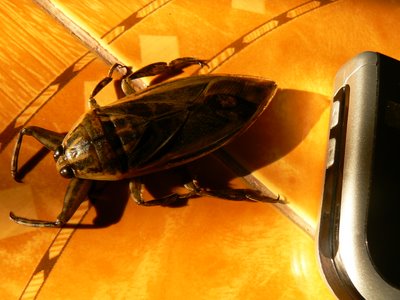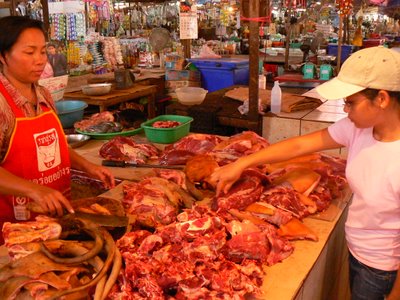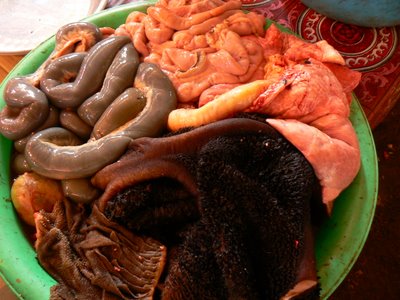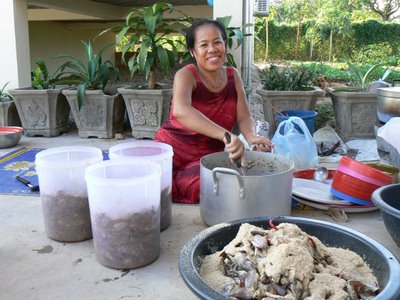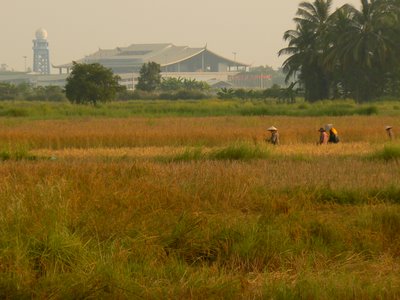
The main intersection
I took this snap shot while sitting at the Vieng Champa restaurant, the place that shows endless reruns of the Simpson’s. I asked for the best Lao restaurant in town and this is where people pointed. You will also notice that it often has a mostly Lao clientele, rich but Lao.
Like all of Laos the most authentic food was to be had at the market in the morning or from the street stalls in the evening. I had the best moke gai I’ve ever had down the street. It seemed to have so much dill that it was just a green glop and it had a chicken taste so I’m sure it had chicken though I found no meat.
Vang Vien gets a bad rap. Supposedly a trashy drug haven full of young stoners staring at a TV showing reruns of the sitcom Friends while reclining on these raised table cum bed type contraptions. While it’s true that there are drugs discreetly available the place has a lot less of a drugy feel to it than say, Kao Sahn Road. Certainly a lot less of a scene than the beaches of southern Thailand.
I personaly find very little difference between people staring at a TV or sipping overpriced coffee at the western cafes of Luang Prabang. There seems to be a standard way to “do” Laos that involves crossing from Thailand at Houay Xia, boating to Luang Prabang bus to Vang Vien, then out through Vientiane or else on to 1000 islands for another round of hanging out. I certainly wouldn’t want to opine about which town offers the more authentic experience.

Above is a relative, my grandfather in law’s, sister’s, husband, who is very happy that anyone has decided to come to Vang Vien. That is his sawngthaew he is leaning on. He often takes loads of people up the river to go tubing. The photo was taken in Ban Namon, about 12 clicks south of Vang Vien at his house.

